My Top Tips for Working With Woody Stems
Before spring properly arrives, it’s a great time to brush up on the fundamentals of care and handling because even if it’s not quite spring where you are, woody stems and blooming branches are entering the wholesale markets. They are so inspiring but can sometimes be tricky to work with, so if you find woody stems a little intimidating or need a refresher, this blog post is for you!
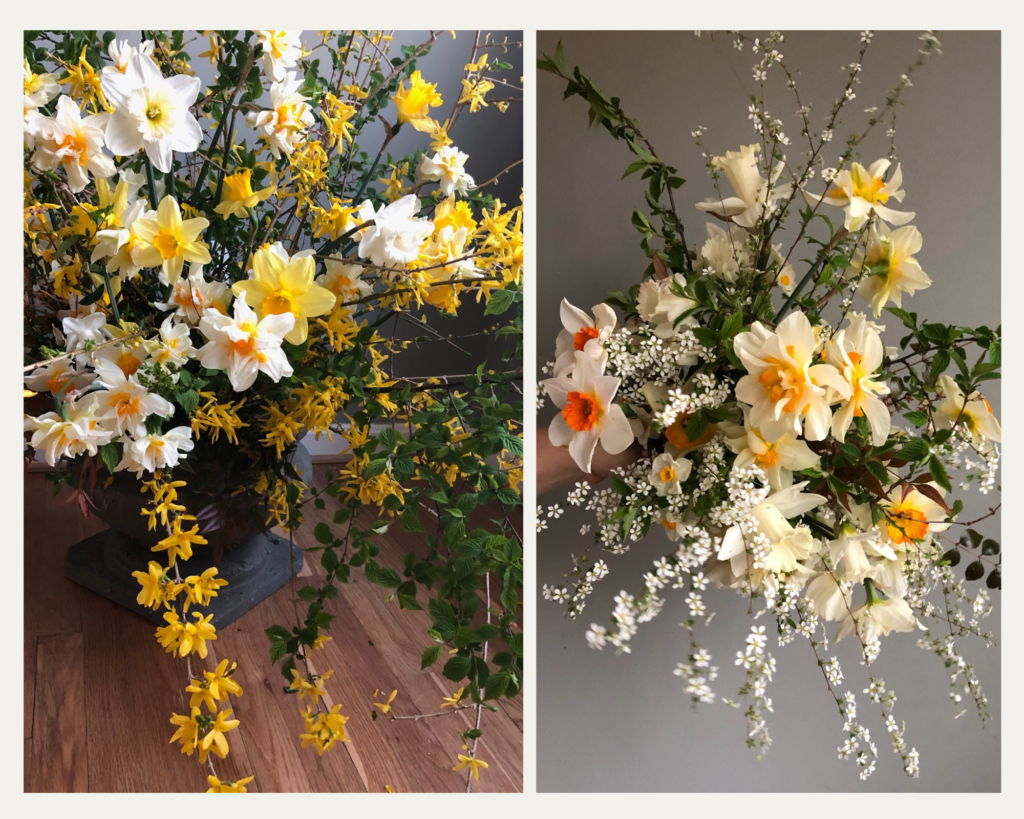
What is a woody stem?
“Woody stems” are flowers and foliage cut from perennial shrubs, bushes, and trees. Think lilac, viburnum, forsythia, or even blooming branches, like peach and quince, that are beautiful for designs in both their flowering and fruiting stages! While most synonymous with spring, you can easily find summer and fall woody stems such as limelight hydrangea, abelia, privet berries, ninebark, and smokebush. In fact, most foliage would be considered woody stems, as well as roses and hydrangeas! So really, they’re a year-round product.
The difference between woody stems and other stems is actually defined by water uptake. In woody stems, the water uptake cells are distributed throughout the entirety of the stem. If you cut a woody stem, you will see that the cross-section is solid. If the stem appears hollow (like solidago or ranunculus), the water is only drawn up through those stem walls. The distinction between hollow stems and woody stems is important since they should be treated differently in their care and handling.
Caring for woody stems
Firstly, when selecting woody stems from a wholesaler or market, it’s important to check the quality and freshness. It can be tricky to tell the condition, so here are some tips:
- Inspect for mold. Check-in areas where there is poor air circulation, like where the stems are bulky or have been bound together near the rubber band or at the base of a sleeve. Oftentimes these tight spaces have the worst airflow and the highest likelihood of molding. Check your buds as well, as they may show signs of fuzzy mold or browning if the florets have been damaged.
- Do the shake test. This works really well on bloomed-out woody stems (meaning little florets or greens have appeared on the branches and they are past a bud stage). If you flip your viburnum, spirea, lilac, etc. upside down and give it a shake, a few petals or leaves will fall off. But, if there is a lot of shedding, this often means the product is older or has experienced stress and may not hold up well.
- Check the foliage. If green foliage is yellowing on the tips or has any slimy texture, the product is heading out. I would pass on it.
- Look at bloom development. Are the blooms very immature, and do you need them full in two days? It is not going to happen as blooming branches and often some woody perennials are slower to open and need time to mature. Are the blooms fully open, and likely to die before your event? They can hold on often for many days but tend to also be fragile and can fail so assess how and when you need them to perform.
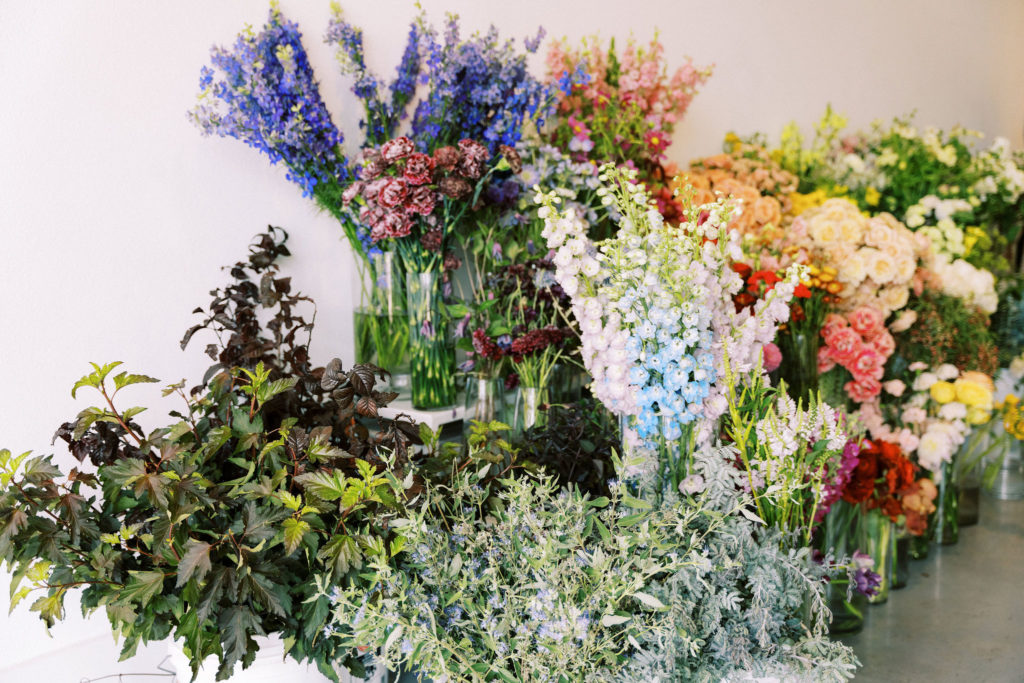
Once the quality of your blooms has been checked, it’s time to hydrate! Proper care and handling are so essential for profitability and keeping products in peak condition. I’ve seen good products, and good money, go down the drain without good processing so it matters!
- Remove plastic wrapping or sleeves.
- Remove rubber bands or ties.
- Remove excess foliage that will fall below the water line in your bucket.
- Simply give them a fresh cut with sharp clean shears across the stem. Then, use your shears to split up the stem, so more surface area is exposed and can take up more water. Note: The old-school method of crushing the bottom of the stems by pounding them has been proven to damage the vessels that allow for hydration.
- Optionally, you can use a hydration treatment such as Hydraflor or Quickdip (be sure to follow container instructions for use).
- Place into a sanitized bucket with cold water and flower food, such as Chrysal’s Pro #2 Solution for blooming branches. A flared bucket will encourage airflow. Do not overfill your bucket.
- Leave out of the cooler until the water becomes room temperature, then put it in a cooler to harden off.
- Ideally, allow stems to hydrate for 6-12 hours before use.
- If kept in the cooler, give your stems a fresh cut at least every three days to encourage continued hydration. TIP, keep large pruning shears on your hands as some woody stems are too thick to get hand-held shears through!
- After designing, consider a finishing spray to support your blooms. Crowning glory, Finishing Touch, and Hawaiian Mist are all good options, just make sure the spray dries before returning your stems to the cooler.
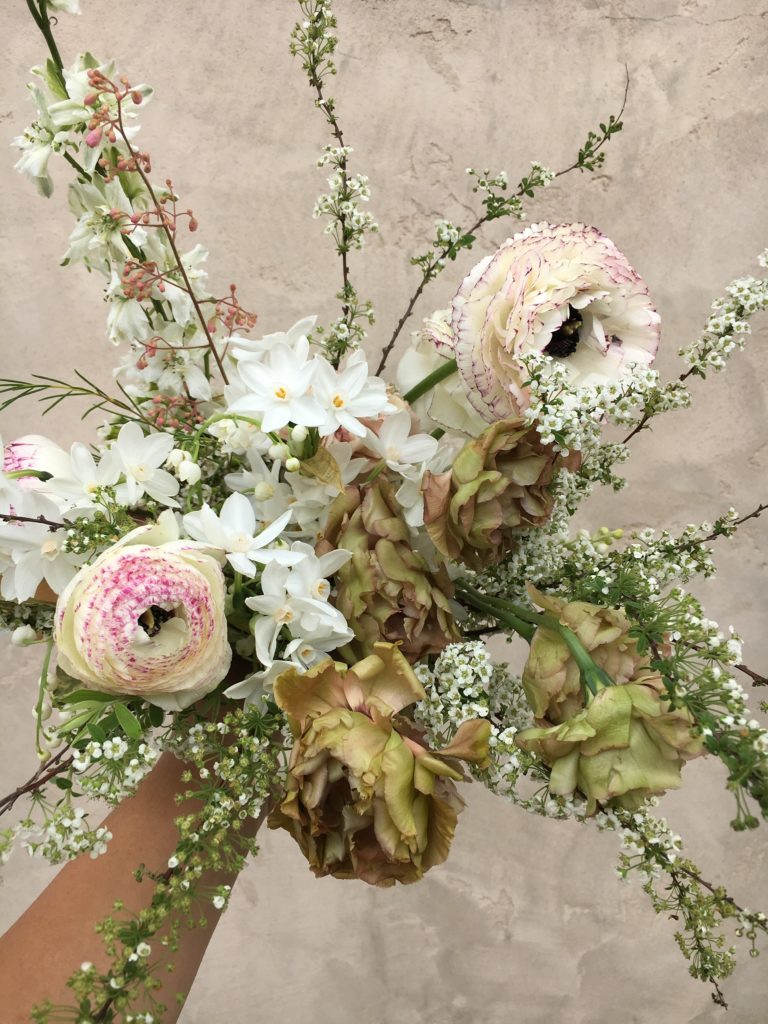
If you need to encourage your blooms to develop or open, you can employ a variety of tactics:
- Leave out of the cooler in a warm room and/or in indirect sunlight.
- Replace cold or room temperature water with hot (but not scalding) water daily. Note: make sure to use a flared bucket if you are using hot water to avoid “steaming” your flowers!
- Give a fresh cut daily, especially if you change to hot water. You can also use a knife to peel or “skin” the outside of the bark where the stem is drinking.
- “Bag” your stems. Place a large shopping bag/ trash bag/dry cleaner bag over your stems to encourage humidity. This environment can encourage mold so be mindful of how long you are using this and keep it to a minimum.
- Use a high-sugar food flower food solution or products like Full Bloom to encourage opening.
Also keep in mind that any time we force flowers to drink and open quickly, the shelf life of that flower will lessen. Be mindful when using different hydrating techniques to determine how that particular flower needs to perform and if you are a retailer or event florist, your goals may vary.
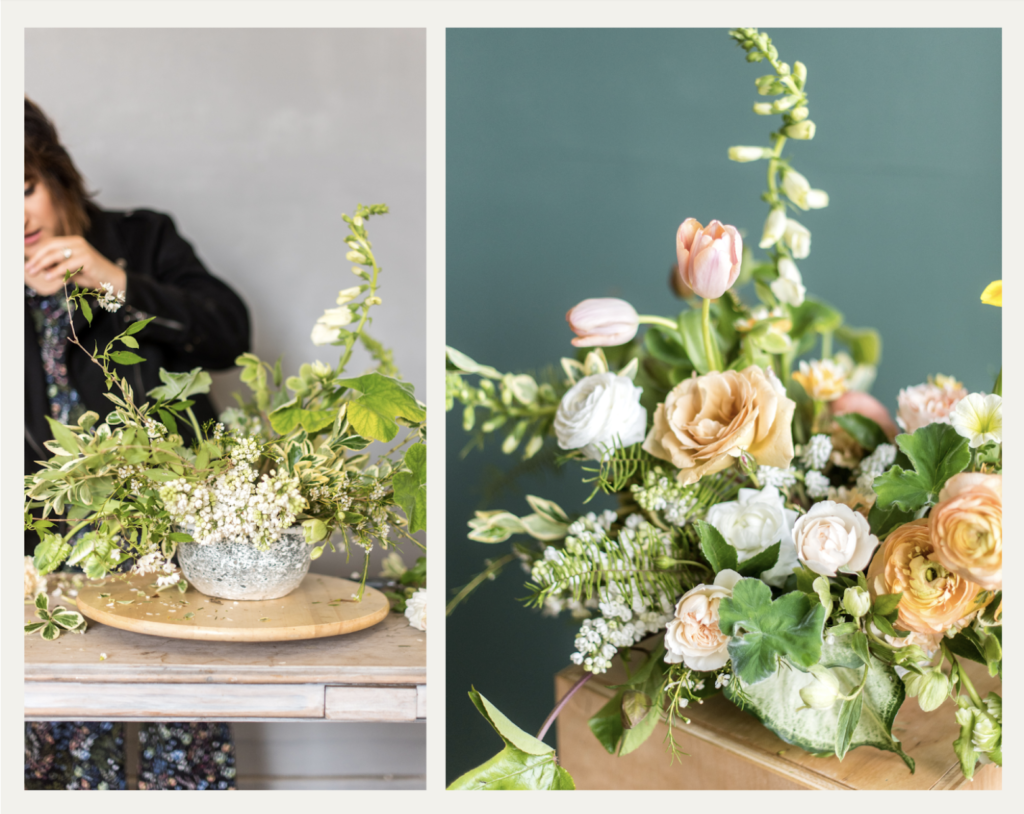
Like most things in floral design, practice is your best friend. Experiment with woody stems for photoshoots or buy a bunch to mix into daily designs so you can work through any issues with care and handling of certain products before a big event or season.
These blooms can bring the beauty of seasonality to our work and allow us to go bigger with our shapes and designs. I encourage you to branch out and try working with woody stems!
Warmly,
Amy
Previous Post:
Next Post:
Leave a Reply
I think you'll also love reading...

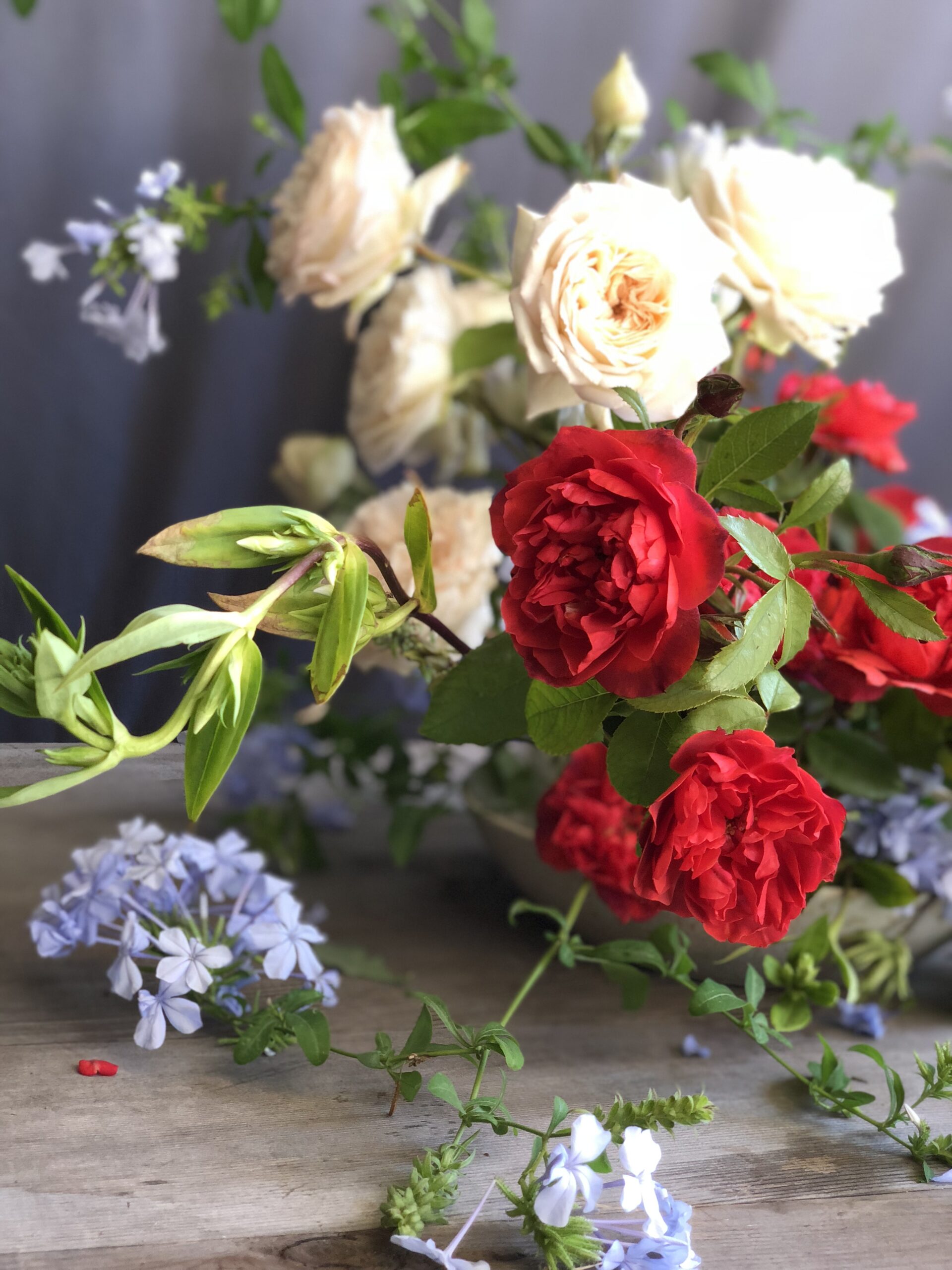
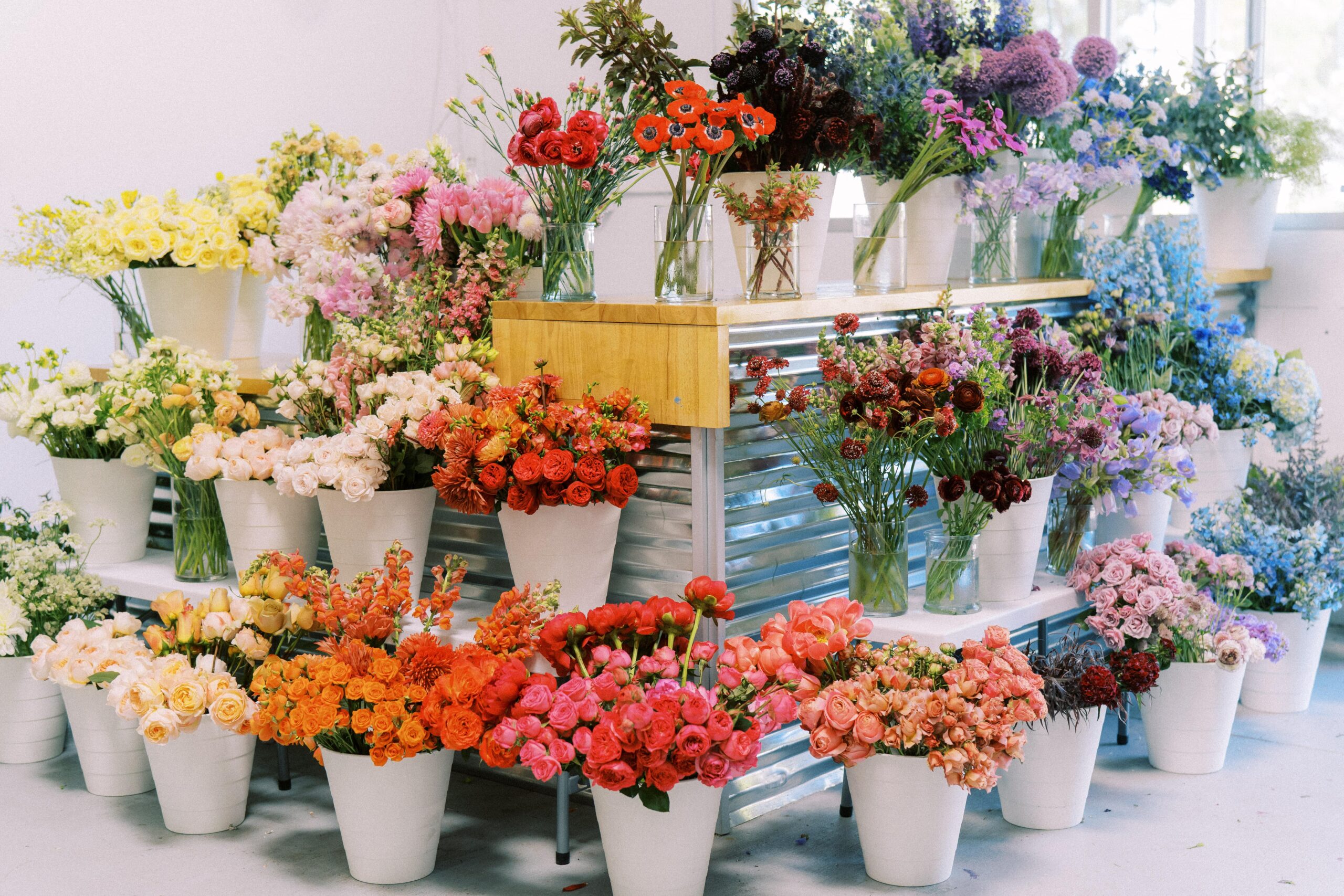
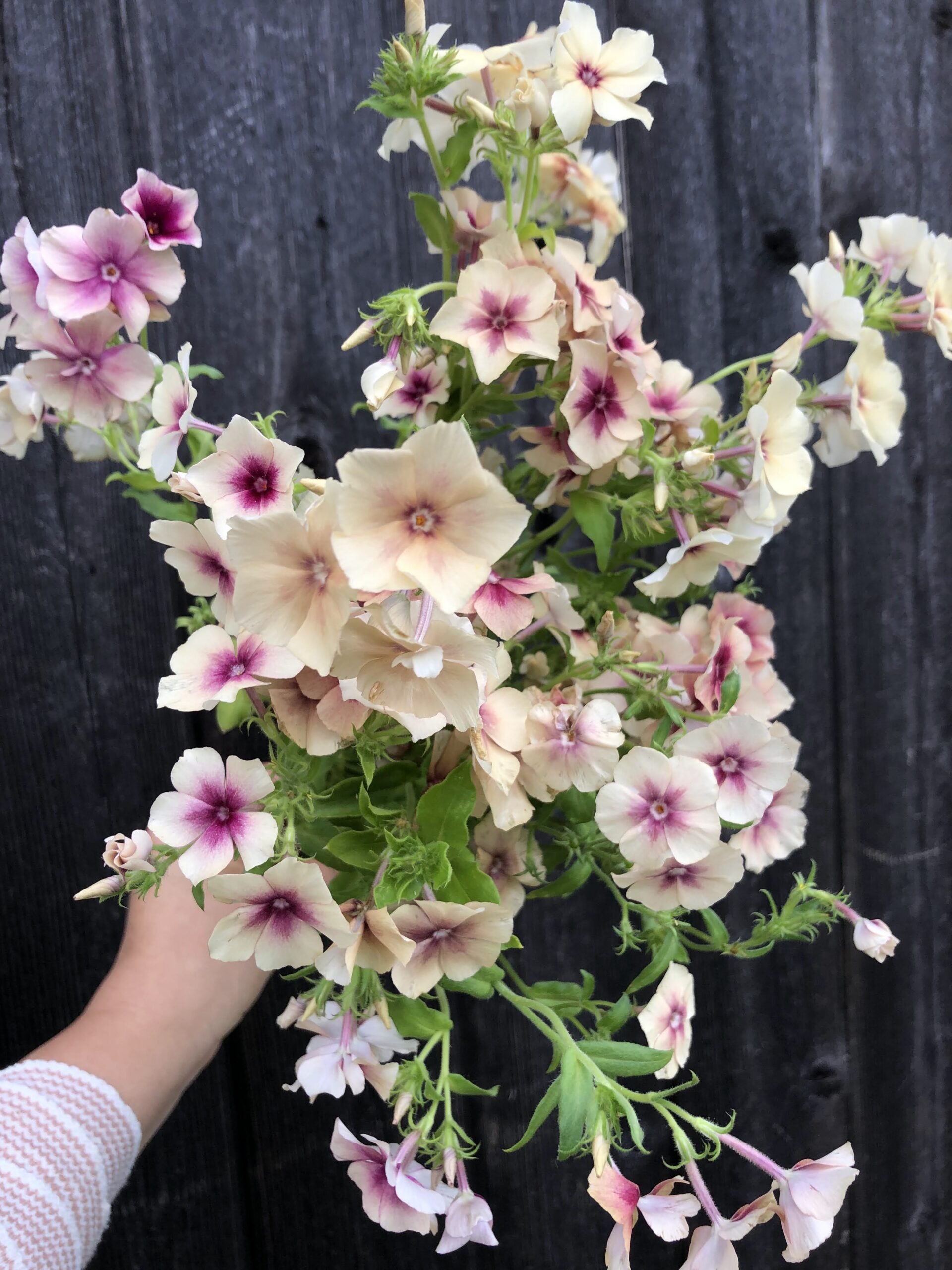
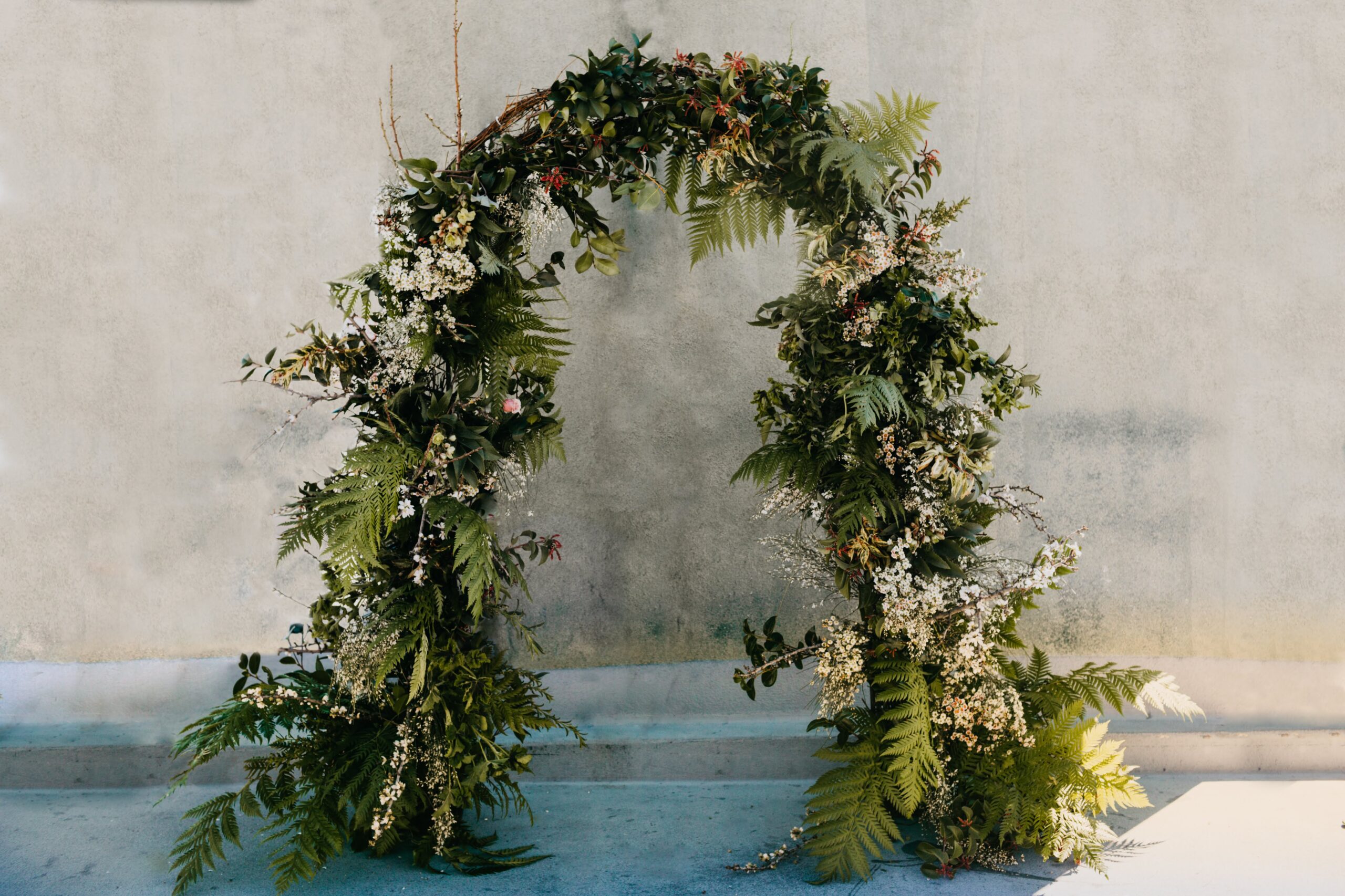

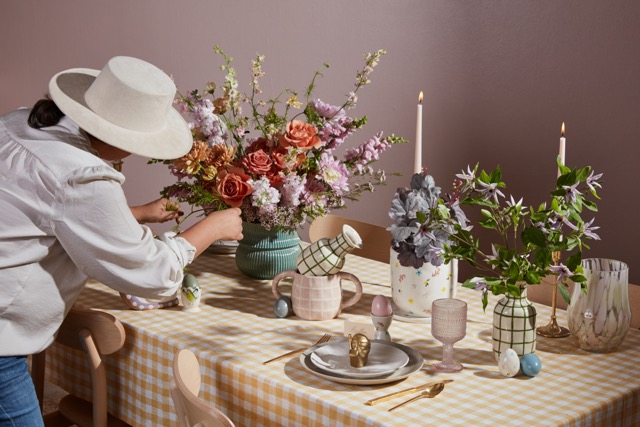

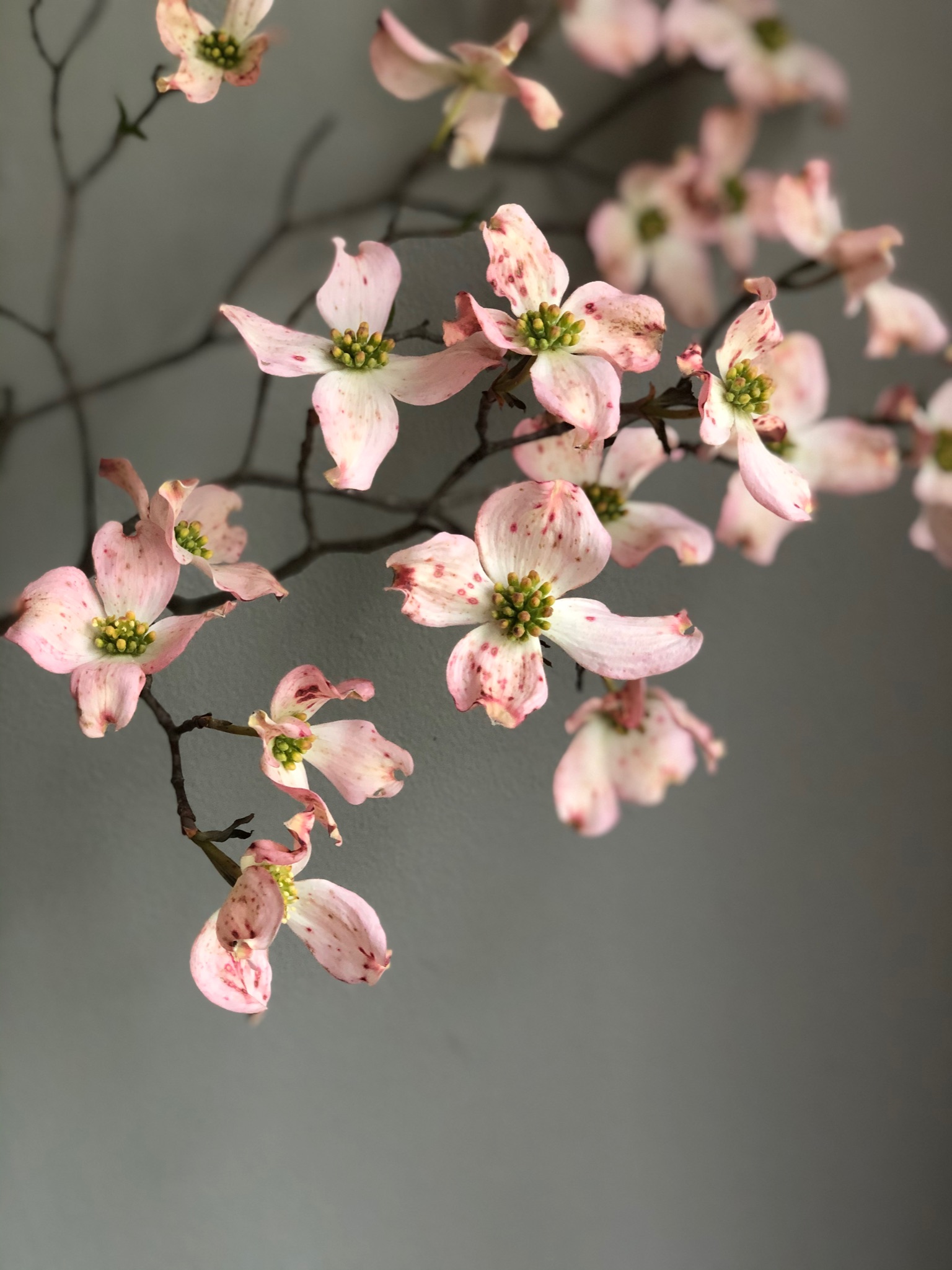
Amy, the bouquet of Spirea, ranunculus, larkspur, paperwhites, and lisianthus. is just spectacular!!
Oh, wow, thank you! I love spring time goodies. Thanks for being here and your nice words!